General
5 reasons a professional tech tester prefers the Google Pixel 9a over iPhone 16E
The Google Pixel 9a and Apple iPhone 16E are the newest mid-tier options in their respective lineups. The 9a starts at $499, a full $100 less than the 16E. But price isn’t the only factor here. Comparing them directly also doesn’t make much sense—they run different operating systems and serve dif...
Condia
published: Jun 02, 2025
The Google Pixel 9a and Apple iPhone 16E are the newest mid-tier options in their respective lineups.
The 9a starts at $499, a full $100 less than the 16E. But price isn’t the only factor here. Comparing them directly also doesn’t make much sense—they run different operating systems and serve different priorities. It really comes down to what works better in the real world.
To put things in context, let’s look at it through the lens of someone who actually stress-tests tech for a living.
Why should you care what this professional thinks?
We spoke to Mayokun C., a mid-level QA Associate at Vnicom Solutions who wants to upgrade from a Samsung A54 phone, and these reflect his shopping choices:
- Doesn’t rely on iMessage, AirDrop, or FaceTime for communication.
- Curious, nerdy, and privacy-conscious in nature. Uses GrapheneOS daily.
- Tests raw apps for bugs and usability.
- Wants a customisable phone keyboard.
- He is no stranger to dropping his phone.
- And yes, pricing matters a lot.
1. Camera quality for a fair price. ‘Pricing matters a lot’
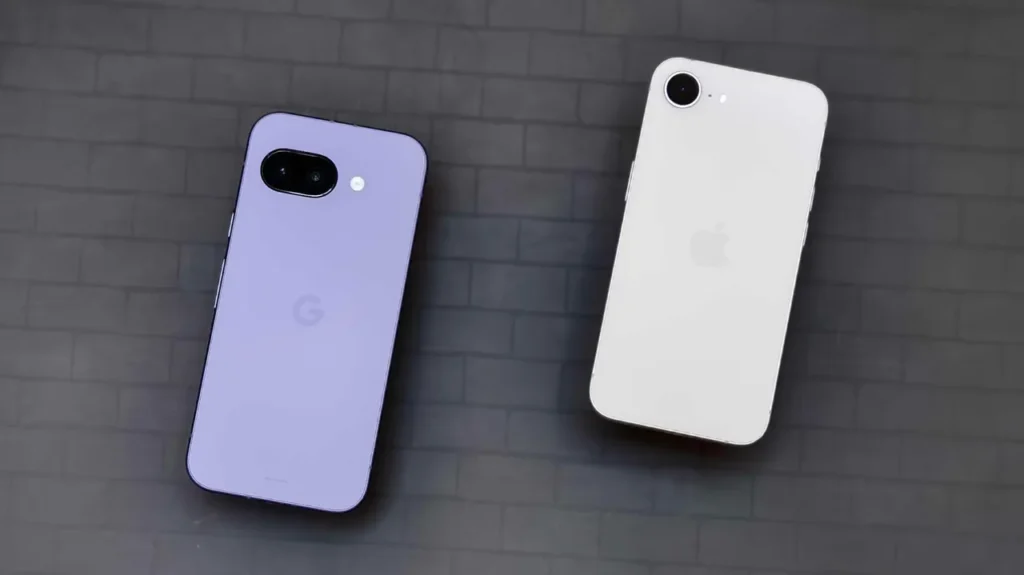
Mayokun’s first priority is value, especially when it comes to camera performance. And for someone upgrading from a Galaxy A54, the Pixel 9a hits the sweet spot. It’s pushing flagship-grade camera hardware into a $499 phone, and Google being Google, regular sales often knock it down to $399 or even lower. By contrast, Apple almost never discounts its phones months down the line.
Specs-wise, the Pixel 9a edges out not just the iPhone 16E, but even Apple’s previous-generation base models. It features a 48MP main sensor with optical image stabilisation, a 13MP ultra-wide, and a 13MP selfie camera. In real-world testing, the 9a came surprisingly close to matching the Pixel 9 Pro’s camera quality, for half the price. It even supports macro shots and up to 10x digital zoom, both absent on the iPhone 16E.
The iPhone, to its credit, still delivers strong photo and video results. Its 48MP single rear camera and 12MP front-facing sensor produce reliably balanced images, and Apple’s video capabilities remain top-tier with support for 4K at 24, 25, 30, and 60 fps on both cameras. But for Mayokun, the absence of features like macro mode and a second rear lens made the iPhone feel like a step behind, especially at $599.
There’s also the pricing philosophy. The 16E feels more like a placeholder—something to keep buyers from jumping to older iPhones or exploring second-hand markets. With minimal hardware changes over previous models, the appeal seems more about locking users into newer software features like Apple Intelligence, assuming they shell out for it.
Both phones offer built-in AI photo tools, but for someone who doesn’t need Apple-specific tools and cares more about shooting flexibility and price-to-value ratio, the Pixel 9a stands out.
2. Not confined to an ecosystem.
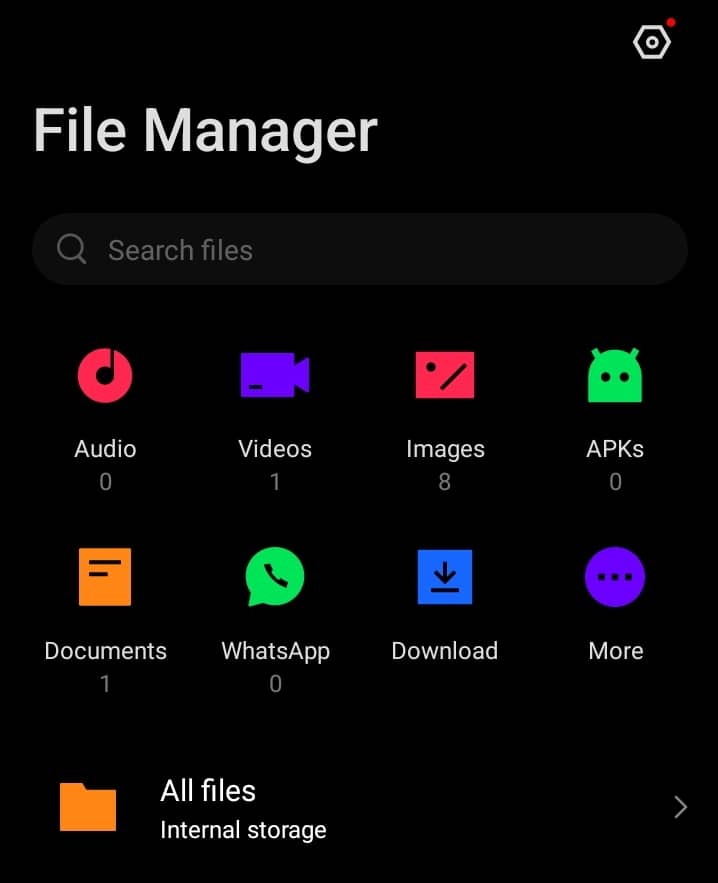
When it comes to Pixel 9a vs iPhone 16E, Mayokun—the QA engineer behind this take—isn’t anti-Apple. Far from it. Apple’s ecosystem does offer an unmatched level of polish: AirDrop, seamless device handoff, Find My, and even unlocking your Mac with your Apple Watch. But if you’re not already deep into the Apple world, the iPhone starts to feel like an expensive gatekeeper rather than a smart pick.
Having used Android phones for a decade, he appreciates Google’s ecosystem for being open and less restrictive. With the Google Pixel 9a, you’re free to choose your tools and still get a cohesive experience. Mayokun’s current setup includes a Windows laptop, an Android phone, and an old iPad that’s still getting updates after seven years. And while moving files to the iPad can still be a pain (even with OneDrive), his Android phone gives him things the iPhone 16E simply doesn’t: SD card support, a logical file manager, the ability to plug in adapters, and sideload apps.
He’s not denying the polish that comes from using an Apple device, or a controlled App Store that keeps junk out. But that level of harmony comes with a catch: you’re expected to buy in, fully. As a QA engineer, he values freedom like copying and pasting files, installing custom launchers, or using his phone with serial devices. These are things iOS still resists.
The Pixel 9a may lack some of Apple’s “just works” charm, but it respects his time. No iTunes. No special apps just to access media. Just drag, drop, go.
So while he respects the iPhone for what it offers in a complete Apple setup, between the Pixel 9a and iPhone 16E, he prefers the 9a, and the fact that he can get stuff done his way.
3. iOS 18’s visual clutter vs. Stock Android.
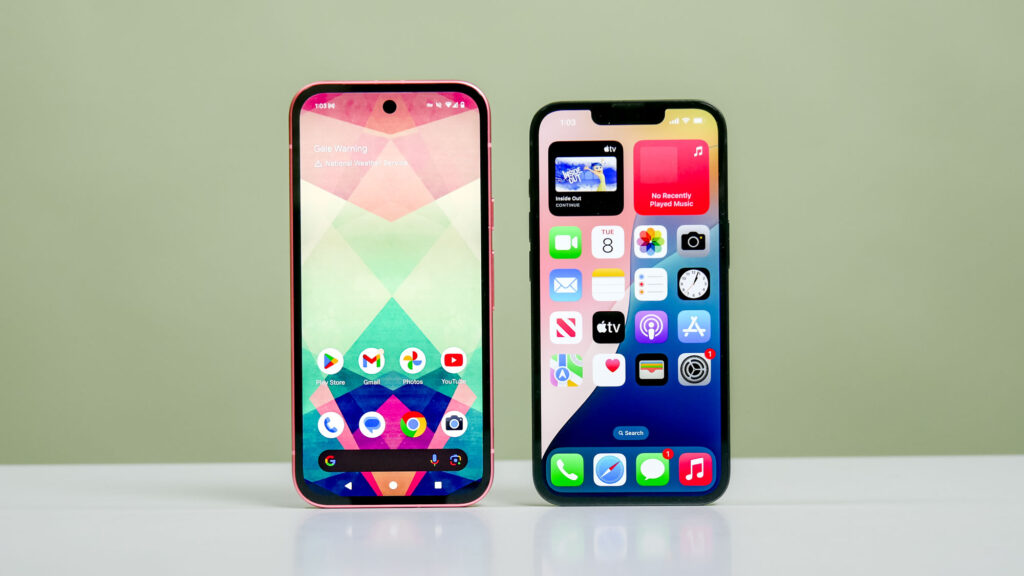
Mayokun didn’t mention iOS 18 directly, but his comments reflect a growing sentiment around the update: iOS is no longer the clean, minimal system it used to be. The Photos app, in particular, feels cluttered, and while that doesn’t affect camera performance, it adds visual noise to everyday use. Compared to the Pixel 9a’s stock Android, which stays simple and responsive, the contrast is clear.
The Pixel 9a also outshines the iPhone 16E in display quality with its 120Hz refresh rate versus 60Hz, a brighter screen, and more freedom for apps to run in the background. For Mayokun, who values screen fluidity and daily flexibility, this difference stood out. He pointed out how the Pixel 9a’s Android 15 feels smoother and less cluttered, not just because of the display, but also the cleaner interface compared to iOS 18. While Apple added more customisation, the Photos app still feels busier, and features like Circle to Search or real-time translation aren’t built in natively on the iPhone 16E.
That said, iOS still leads in app quality and faster updates. But with Gemini’s advanced AI features and stock Android’s smoother, more flexible experience, including real-time translations in Yoruba, the Pixel 9a feels like the more capable phone for now.
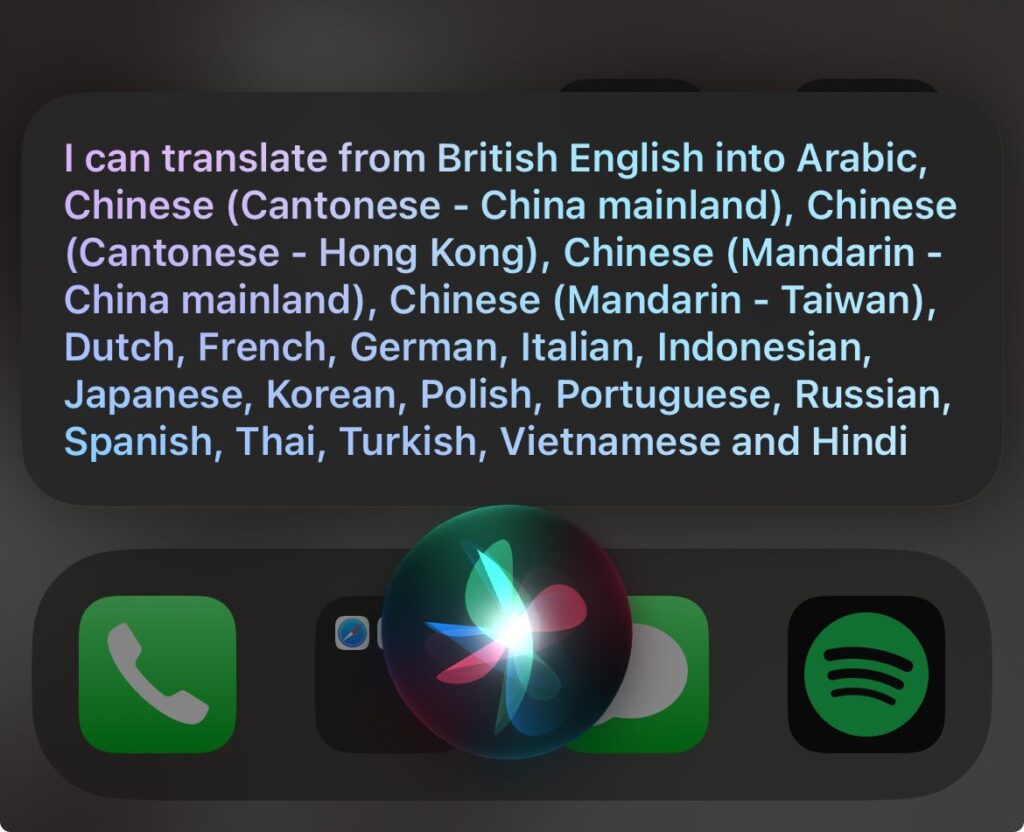
See Also: Google I/O 2025: What Africa’s tech builders need to know
4. Always has apps running in the background
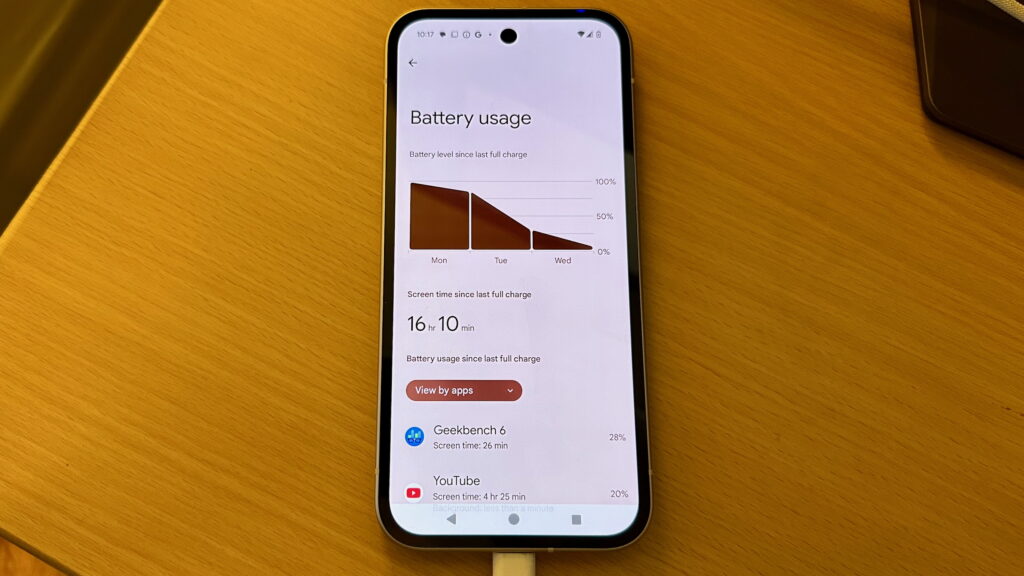
Mayokun often has multiple apps open throughout the day—something that would normally take a toll on most phones. But the Pixel 9a holds up well. With a 5,100 mAh battery, it consistently pushes out two to five more hours of screen-on time than the iPhone 16E, even under heavier use.
While Apple’s optimisations let its smaller 4,005 mAh battery last a full day, the Pixel’s raw capacity, faster 23W wired charging, and support for wireless charging give it a practical edge.
And if battery degradation becomes a concern later, Google even sells official replacements at around $40, which keeps long-term ownership simple. Add in Wi-Fi 6E support for faster, more stable connections, and it’s clear the Pixel 9a was built with power users in mind.
5. Still prefers a fingerprint unlock and the little things that matter.
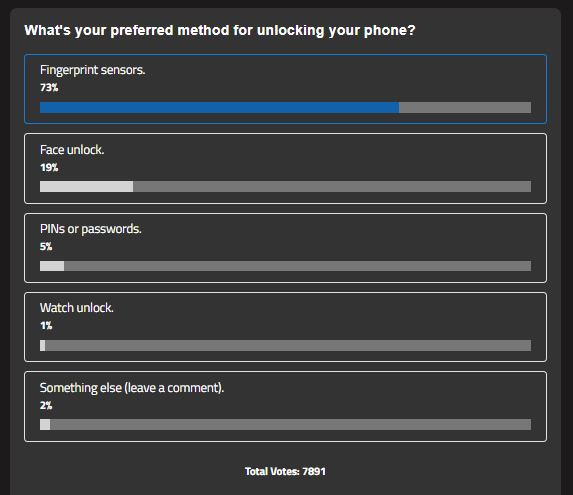
“Face ID works, but it’s not for everyone,” said Mayokun. For users like him who want to unlock their phone instantly without swiping or adjusting their angle, a fingerprint reader is a more practical option. The Pixel 9a delivers on that with a fast, reliable under-display sensor that works even in low light or awkward positions. Compared to the iPhone 16E, where you still have to wait for Face ID and then swipe up, the Pixel feels more straightforward. That simplicity matters when speed and convenience are key.
Mayokun also raised a point about durability for real-world use. Glass-backed phones might look sleek, but they’re fragile in everyday use. The Pixel 9a’s plastic build may not be flashy, but it holds up better over time. You’re less likely to deal with cracked backs or expensive repairs, something iPhone 16E users will often face.
And while it’s a small thing, typing comfort matters too. This QA engineer prefers Android’s Gboard for its swipe accuracy, built-in clipboard, and multilingual support, features the iPhone’s keyboard either lacks or doesn’t do as well. Even when Gboard is installed on iOS, it’s limited and less responsive. For users who type often or switch languages, these little details add up.
Key Specifications – Pixel 9a vs iPhone 16E
| Google Pixel 9a | iPhone 16E | |
|---|---|---|
| Operating System | Android 15 | iOS 18 |
| CPU | Google Tensor G4 | Apple A18 |
| Dimensions | 6.1 by 2.9 by 0.4 inches | 5.78 by 2.82 by 0.31 inches |
| Screen Size | 6.3 inches | 6.1 inch |
| Screen Resolution | 2,424 by 1,080 pixels | 2,532 by 1,170 pixels |
| Camera Resolution (Rear; Front-Facing) | 48MP, 13MP; 13MP | 48MP; 12MP |
| Battery Life | 13 hours, 15 minutes | 21 hours, 37 minutes |
| Starting Price | $499 | $599 |
Final Thoughts
The Pixel 9a might not have the flashiest reputation, but when you break it down—display, battery, software, everyday usability—it quietly makes a strong case for itself. Like Mayokun, if those things matter more to you than benchmark scores or brand status, it’s an easy pick.
And if you’re still exploring both ecosystems (Android and iOS), a small setup choice can save you future headaches. Avoid using “Sign in with Apple” or “Sign in with Google” when creating accounts. Stick to email logins. It keeps your options open and switching between platforms much simpler down the road.
Read More